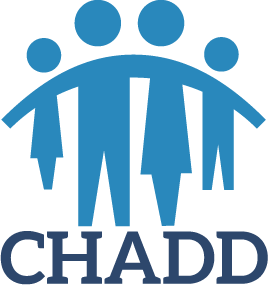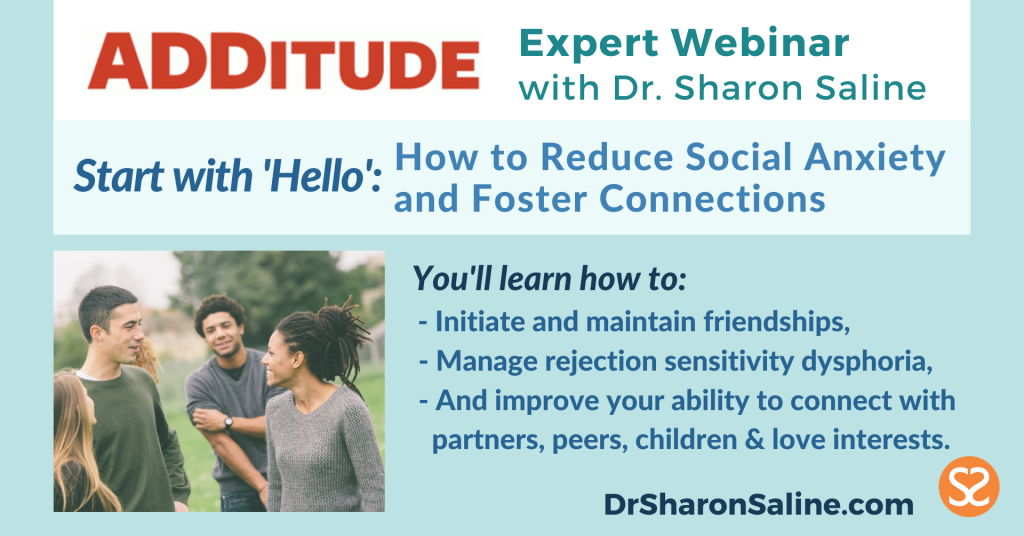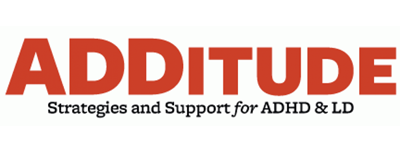(for Children and Teens with ADHD)
Navigating the ins and outs of getting help for your child in school can be overwhelming, especially when it feels like everyone is speaking a language you’re not familiar with! This week, I’ll help demystify two very different avenues of accessing school support for your child or teen – I’ll share everything you need to know about IEP and 504 plans for children and teens with ADHD. You’ll be able to advocate for them more effectively and they’ll be able to manage classes and homework with more ease and success.
Many kids with ADHD struggle in school–not just with accessing what they know when they need to use it but also with co-occurring learning disabilities that occur about 70% of the time. There are several paths that lead to the provision of an Individualized Education Plan (IEP) or Section 504 Service Agreement (504 SA) for your child, but they all start with one thing – concern that your child may need additional support to be successful in school, and a psychoeducational or multi-disciplinary team evaluation to determine why they are struggling. Your child’s school might request to initiate this evaluation, you might request an evaluation, or you might provide the school with documentation of your child’s existing disability or neurodivergence…there are many different scenarios in which a student can be referred to determine eligibility.
Where to begin the process
Ultimately, everyone wants to ensure that if your child does need modifications or accommodations due to neurodivergence, they receive tools and strategies to be successful at school. This process often starts with a team meeting (that you or your school team typically have to formally request) to discuss concerns that can
lead to a psychoeducational evaluation, functional behavioral assessment or recommendation to meet with your primary care provider. If your child already has a diagnosis of ADHD and/or an evaluation that you obtained privately, then this meeting will most likely discuss the information that you already have, and any impact on school performance. Either way, you and the school team will discuss what’s going on and the team will decide whether a school based evaluation is appropriate to determine if your child is eligible under IDEA for an IEP or Section 504. If so, then they will develop a plan that outlines what, how, and where any needed supports or accommodations will be provided.
Now that we’ve laid out how to begin, let’s talk about the basics of an IEP and 504, what each of them is (and is not), and who they are appropriate for. In order to do this, I will be using the word ‘disability’ here when referring to ADHD instead of ‘difference’ because school based services are only provided based on the determination of a disability.
Individualized Education Plans–IEPs
An IEP – “Individualized Education Plan” is a legal document that outlines what supports and services your child will receive as a result of being found eligible for special education under a qualifying disability category. Federal law under IDEA guarantees a free and appropriate education to all students. IDEA is about facilitating academic achievement and progress. IEPs are just one component of what falls under the umbrella of “Special Education” for children ages 3 through 21 in schools. They offer a road map for teachers, support staff, related service providers, parents, and other team members to follow.
The Details of an IEP
An IEP can only be drafted after the school has conducted a psychoeducational evaluation (or you bring one that the district accepts), shared the findings with you, and all participants agree that the student is eligible for special education under a qualifying disability category. The named disability has to be found to negatively impact their educational performance so that the student needs specialized support and services to make progress educationally. While disability categories can vary from state to state, federal law under the Individuals with Disabilities Education Act (IDEA, Part B) identifies thirteen categories of disability, including: Other Health Impairment, Specific Learning Disability, Traumatic Brain Injury, Orthopedic Impairment, Hearing Impairment, Emotional Disturbance, Autism, Speech/Language Impairment, etc.
An IEP is characterized by the modifications that are deemed necessary to make the curriculum more accessible for the student to be successful. These are changes to what is taught or expected, through specialized instruction or the provision of related services (behavior supports, PT/OT, Speech, etc.). An IEP means that the student has been found eligible for Special Education.
ADHD and IEPs
Under IDEA, ADHD is considered an “Other Health Impairment.” The psychoeducational evaluation by the school cannot diagnose ADHD per se but will indicate that a child has the symptoms or behaviors commonly seen in attention disorders. This means that you will have to take the report back to your primary care provider or a licensed therapist for a formal diagnosis or clinical/medical follow-up. It’s a complicated process but worth it in the end to get services at school.
Section 504 Service Agreement – 504 Plans
A “504 Plan” or “Section 504 Service Agreement” is a civil rights law that refers to

Section 504 of the US Rehabilitation Act of 1973. It is a legal document that outlines what accommodations your child needs to ensure equitable access in their schooling.
A 504 SA can only be drafted after the school has conducted an evaluation or reviewed one that you have provided and discussed the findings with you. All participants agree that the student has a disability that limits their functioning in one or more “major life areas” and qualifies for protection as a result. These functions include such things as self-care, performing manual tasks, walking, seeing, speaking, breathing, learning, working, eating, lifting, bending, reading, concentrating, thinking, communicating, and more.
504 Plans Level the Playing Field
A 504 is characterized by the accommodations that are necessary for the student to access the curriculum. It is designed to “level the playing field”. 504’s eliminate barriers to allow students with disabilities to access the same activities and programs as their non-disabled peers. It offers protection to persons with disabilities from discrimination based on their disability. Again, within this definition, ADHD qualifies as a disability.
Students – at any level – who attend a school program that receives federal funding can be eligible for protection under a 504 Service Agreement. They require accommodations to access the General Education setting. This means a student who is enrolled in preschool, elementary, secondary, postsecondary, vocational, or adult education can qualify, regardless of age.
With the technical information about IEPs and 504 plans out of the way, let’s look at some common misconceptions and the real truths.
Myths vs. Facts about IEP AND 504 Plans
MYTH: My child was diagnosed with ADHD by her psychiatrist/family doctor/specialist, she should have an IEP.
FACT: She should have an IEP only if progress at her grade level is negatively impacted by her ADHD symptoms.
A common misconception that many parents have is that a diagnosis of ADHD, “dyslexia” (or a specific learning disability), ASD, Anxiety, etc., made by a medical professional, means that their child automatically needs Special Education programming and an IEP. This is only true when there is an educational impact because the symptoms of that diagnosis make learning at grade level difficult for the student.
If she is learning at grade level, but needs accommodations like extra time on tests, verbal directions, etc., to address symptoms of ADHD, then a 504 SA could be appropriate.
MYTH: Our son’s outside executive functioning coach thinks he has ADHD and maybe dyslexia. She thinks the school should diagnose him.
FACT: A school cannot diagnose a student with ADHD or diagnose dyslexia. For a clinical or medical diagnosis, you should follow up with a primary care provider or licensed therapist. But, if the school were to do an evaluation and also find him eligible under IDEA, he would have educational eligibility under “Specific Learning Disability” and “Other Health Impairment”, and an IEP could be drafted. Remember that in schools, ADHD is considered an “Other Health Impairment”, and dyslexia is considered a “Specific Learning Disability”. The reality is that the same diagnoses a child receives from an outside clinical/medical professional exist in schools but may be categorized or called something different. No wonder parents get confused!
When considering whether an IEP or 504 SA may be appropriate for your child at school, here are 5 key takeaways:
Key Takeaways
- An IEP makes mandatory adjustments and modifications, a 504 SA affords access and makes some accommodations.
- Not all students with neurodivergence need special education!
- Clinical and medical diagnoses and educational disabilities are often two different versions of the same language.
- A school-based evaluation determines eligibility for special education or a 504 SA.
- Going through the process of determining what types of services are best for your child can be very confusing. Get the support you need by talking with your primary care provider, licensed therapists, special education advocates or knowledgeable coaches.
 impact how you function cognitively–your thinking, your recall and your concentration. It can also reflect difficulty with making decisions, mental fatigue, slower response time and uncertainty. While we don’t know what causes brain fog exactly, research shows that it’s associated with
impact how you function cognitively–your thinking, your recall and your concentration. It can also reflect difficulty with making decisions, mental fatigue, slower response time and uncertainty. While we don’t know what causes brain fog exactly, research shows that it’s associated with  things, if you will arrive on time, and if people will like you.
things, if you will arrive on time, and if people will like you.
 hyperfocus, try breaking tasks down into 30-45 minute work blocks. You want to give your brain time to reset and rest a bit throughout the day rather than go intooverdrive and burnout. It can be tough for a lot of people who like to hunker down and plow through a set of projects. But overworking like this uses up the natural glucose fuel in the brain and then relies on cortisol. You wind up creating stress that doesn’t need to be there. Trying to remember everything also adds pressure. Give yourself a break and write things down. This also reduces stress and gives you the visual cues you need to be productive and stay focused.
hyperfocus, try breaking tasks down into 30-45 minute work blocks. You want to give your brain time to reset and rest a bit throughout the day rather than go intooverdrive and burnout. It can be tough for a lot of people who like to hunker down and plow through a set of projects. But overworking like this uses up the natural glucose fuel in the brain and then relies on cortisol. You wind up creating stress that doesn’t need to be there. Trying to remember everything also adds pressure. Give yourself a break and write things down. This also reduces stress and gives you the visual cues you need to be productive and stay focused. lunches, our parental priorities shift from “summer fun” to “get it done.” The back-to-school transition helps set the stage for a successful school year. It is
lunches, our parental priorities shift from “summer fun” to “get it done.” The back-to-school transition helps set the stage for a successful school year. It is









